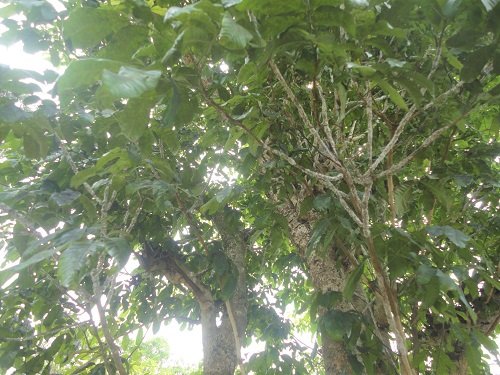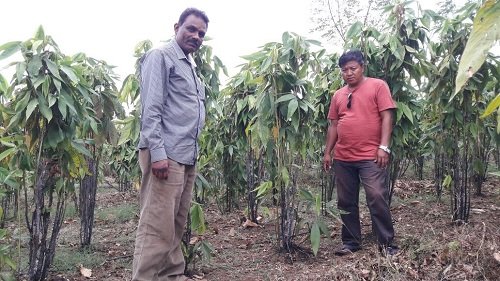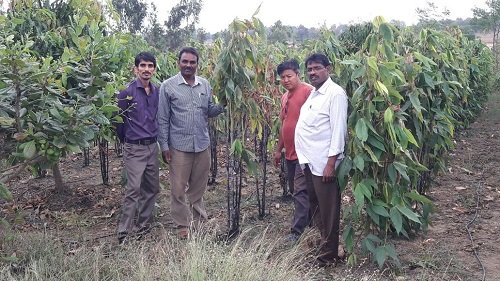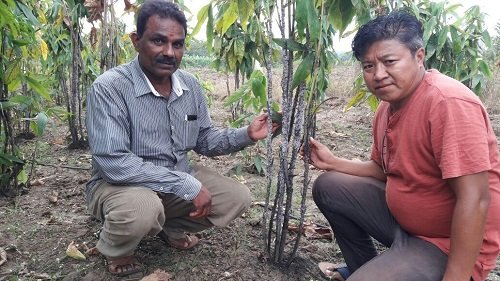


Lac is a natural resin secreted by lac insects, which thrive on specific host trees. Once the largest exporter of lac, India saw a decline in production with the advent of synthetic alternatives. However, the global shift towards natural resins has revitalized lac cultivation. In Karnataka, Kadamba Foundation, under the pro-farmer vision of Sri Anant Kumar Hegde, played a pioneering role in reintroducing and promoting lac farming.
A Brief History:
The word "lac" originates from the Sanskrit "laksha" (100,000), symbolizing the vast number of insects producing this resin. Lac has been referenced in ancient Hindu texts like the Atharva Veda, which recognized its medicinal value and identified the Palsah Tree (Butea monosperma) as the ideal host. The Mahabharata also mentions the construction of the Laaksha Gruha (Lac Palace).
Scientific studies on lac began in 1709 with Father Tachard, followed by detailed research from James Kerr and other botanists. Today, Kadamba Foundation continues this legacy, promoting lac cultivation in the Mundgod region. Notably, Tibetan farmer Kunchok Tseten, with Kadamba’s support, successfully cultivated 6,000 lac plants within his mango plantation, marking a significant milestone in the revival of this ancient practice.
In modern history the scientific study of Lac resin and the Lac insects was first done in 1709 by Father Tachard, a Christian missionary of the society of Jesuits. He studied its occurrence, preparation and also little bit physio-chemical properties. Then James Kerr, a medical officer in the India Company’s Service,undertook a scientific study and published the paper entitled .
Lac is a scarlet resin secreted by an insect that makes its home on trees. Laccifer lacca is a commercially important Indian lac insect which is found in tropical or subtropical regions on banyan and other plants. The leading producer of lac is Jharkand, followed by Chattisghar, West Bengal, Karnataka and Maharashtra.
Lac is applied over the skin in skin diseases. It stops bleeding in wounds and injuries, heals skin ulcers, speeds up recovery process of ulcer, wounds and other skin diseases. Purified Lac is used in Ayurvedic and Unani medicines. However, sourced as an animal origin, it has a great significance in management of joint disorders, osteoporosis, osteomalacia, osteoarthritis etc. It is also helpful in obesity, renal and spleen disorders, jaundice, backache problems, leprosy, ulceration, epilepsy and chicken pox. It is an amazing liver tonic when taken with other liver stimulant herbs.
Lac, the only resinous compound of animal origin has immense economic importance. No doubt the development of many synthetic products have made its importance to a little lesser degree, but still it can be included in the list of necessary articles. Lac is used in making toys, bracelets, sealing wax, gramophone records, bangles etc. Waste materials produced during the process of stick lac are used for dying purpose. From the stick lac, shellac is obtained after purification which is used as coating for medicines.
The LAC cultivation at Tibetan colony in Mundgod region. First time in India the Tibetans started cultivating LAC in Mundgod. The Kadamba Foundation volunteers with the farmer Mr. Kunchok Tseten.He has cultivated 6000 Plants in between Mango plantation.






| Sl No | Taluk | Area Covered (Ha) | No of benefeciaries |
|---|---|---|---|
| 1 | Ankola | 2 | 9 |
| 2 | Bhatkal | 3 | 5 |
| 3 | Haliyal | 1 | 6 |
| 4 | Honnavar | 12 | 12 |
| 5 | Joida | 12 | 12 |
| 6 | Kumta | 10 | 10 |
| 7 | Mundgod | 86 | 86 |
| 8 | Siddapur | 116 | 109 |
| 9 | Sirsi | 169 | 164 |
| 10 | Yellapur | 25 | 25 |
| 11 | Belgaum | 1 | 100 |
| Total | 11 | 214 | 438 |
Gum Lac cultivation under Kadamba